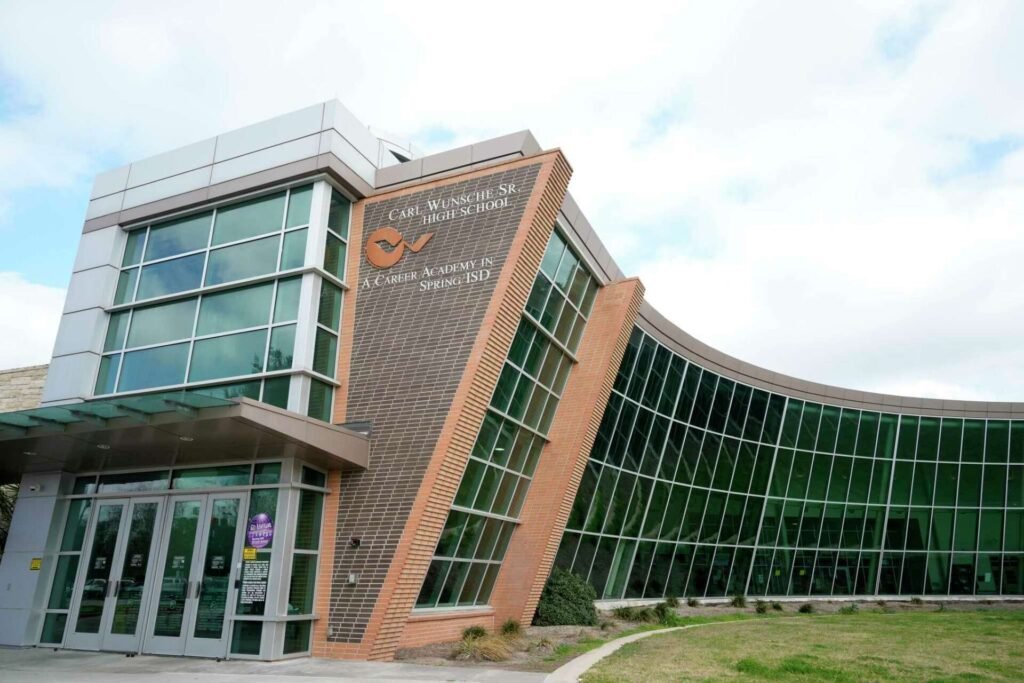Choosing the right medical school is a pivotal milestone for any aspiring doctor, shaping not only the next four years of education but the trajectory of an entire medical career. The decision goes far beyond rankings — it’s about finding the right balance of academic rigor, hands-on experience, research opportunities, and personal fit. In the United States, medical students have access to some of the most prestigious institutions in the world, where innovation, patient care, and groundbreaking research intersect every single day.
These schools are not just places of learning; they are hubs of discovery and service. Many are affiliated with top-ranked hospitals and cutting-edge research centers, giving students direct exposure to the realities of modern healthcare. They attract world-class faculty, many of whom are leaders in their fields, and they offer specialized programs that allow students to tailor their education toward specific career goals — whether that means excelling in surgery, advancing cancer treatment, improving rural healthcare access, or leading global health initiatives.
In this comprehensive guide, we’ll walk through the best medical schools in the US, exploring their academic strengths, unique programs, tuition costs, and the qualities that make each stand out. Whether your passion lies in internal medicine, pediatrics, neuroscience, or public health, this list will help you make an informed choice that aligns with both your ambitions and your values.
Also Read: Best schools in Sacramento
Why Choosing the Right Medical School Matters
Medical school is not just about earning an MD — it’s about building a strong foundation for your entire career. The institution you choose will influence the opportunities you get, the mentors you meet, and the kind of doctor you become.
What the Right School Can Offer You
- Access to Top Hospitals & Research Centers – Work in facilities at the forefront of medical innovation.
- Connections with Leading Medical Professionals – Learn directly from experts and build a network that lasts a lifetime.
- Specialized Training Programs – Tailor your education to fields like surgery, pediatrics, neuroscience, or global health.
- Higher Residency Match Success – Benefit from strong reputations and alumni support when applying for residencies.
The Reality of Competition
Top-tier medical schools are highly selective — many admit less than 5% of applicants each year. To stand out, you’ll need:
- A high GPA and competitive MCAT score
- Clinical experience through volunteering or shadowing
- Strong research involvement
- A compelling personal statement that reflects your passion for medicine
Choosing wisely now can mean the difference between a good career and a truly exceptional one.
Best Medical Schools in the US
1. Harvard Medical School – Boston, Massachusetts

Founded: 1782
Acceptance Rate: ~3.3%
Tuition: ~$68,000/year
Harvard Medical School (HMS) is widely regarded as the gold standard for medical education, consistently holding the #1 spot in U.S. News & World Report for research. Located in Boston’s prestigious Longwood Medical Area, HMS offers students unparalleled opportunities for clinical training and research. Its close affiliations with Massachusetts General Hospital, Brigham and Women’s Hospital, and the Dana-Farber Cancer Institute ensure that students gain hands-on experience in some of the nation’s top healthcare facilities.
Why Harvard Medical School Stands Out
- Innovative Pathways Curriculum – Encourages early clinical exposure, integrated learning, and collaborative problem-solving.
- Unmatched Research Opportunities – Access to cutting-edge studies across all fields of medicine, from oncology to neurology.
- Global Health Focus – Programs and partnerships worldwide prepare students for careers with an international impact.
Harvard’s combination of academic prestige, advanced research facilities, and a global perspective makes it a dream destination for many aspiring physicians — and one of the most competitive programs in the world.
Also Read: Best Schools in Brisbane (Latest Edition)
2. Johns Hopkins University School of Medicine – Baltimore, Maryland

Founded: 1893
Acceptance Rate: ~6%
Tuition: ~$62,000/year
Johns Hopkins University School of Medicine is recognized worldwide for its groundbreaking contributions to medical research, surgery, and patient care. As one of the most respected institutions in the United States, it has a long history of innovation that has shaped modern medicine. Students here benefit from a close partnership with Johns Hopkins Hospital, consistently ranked among the top hospitals in the nation. This affiliation offers unparalleled opportunities for hands-on clinical training from the earliest stages of medical education.
Why Johns Hopkins Stands Out
- Pioneering FlexMed Curriculum – Seamlessly integrates basic science with early clinical exposure, ensuring a well-rounded medical education.
- Emphasis on Medical Innovation – A leader in developing new treatments, surgical techniques, and healthcare technologies.
- Global Research Collaborations – Partnerships with institutions worldwide foster a global perspective on healthcare challenges and solutions.
For students aiming to combine cutting-edge research with exceptional clinical training, Johns Hopkins offers the ideal environment to develop both the scientific mind and the compassionate heart of a physician.
3. Stanford University School of Medicine – Stanford, California

Founded: 1908
Acceptance Rate: ~2.3%
Tuition: ~$65,000/year
Stanford University School of Medicine blends world-class medical education with the innovative spirit of Silicon Valley. Known for its excellence in biomedical research, the school leads advancements in genomics, neuroscience, cancer treatment, and regenerative medicine. Its location in the heart of California’s tech hub fosters unique collaborations between medicine, technology, and entrepreneurship — producing future physicians who are as comfortable with data science and AI as they are with clinical skills.
Why Stanford Stands Out
- State-of-the-Art Simulation Centers – Hands-on learning in advanced facilities that replicate real-world clinical scenarios.
- Hospital Collaborations – Opportunities to train at Stanford Hospital and Lucile Packard Children’s Hospital, both leaders in patient care and research.
- Entrepreneurial Approach to Healthcare – Encourages students to develop innovative solutions to global medical challenges, often in partnership with tech startups.
For students seeking a program that combines cutting-edge science with an innovative, forward-thinking approach, Stanford offers an environment where groundbreaking ideas turn into life-changing medical advances.
4. University of California, San Francisco (UCSF) School of Medicine – San Francisco, California
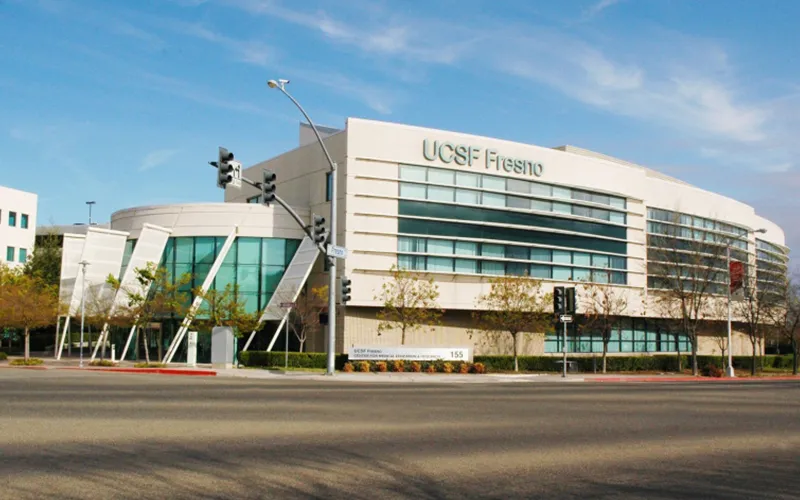
Founded: 1864
Acceptance Rate: ~3.5%
Tuition: ~$41,000/year (in-state), ~$53,000/year (out-of-state)
The University of California, San Francisco (UCSF) School of Medicine is one of the nation’s top medical institutions, with a reputation built on excellence in primary care, research, and public health. Consistently ranked among the top five US medical schools, UCSF is a leader in HIV/AIDS treatment research, neuroscience, and advancing health equity. The school attracts students who are as passionate about serving communities as they are about pursuing medical innovation.
Why UCSF Stands Out
- Mission-Driven Commitment – A strong focus on serving underserved and vulnerable populations, both locally and globally.
- Exceptional Clinical Training – Access to world-class facilities, including UCSF Medical Center and Zuckerberg San Francisco General Hospital.
- Leadership in Research & Public Health – Pioneering programs addressing global health challenges, chronic diseases, and social determinants of health.
UCSF offers an ideal environment for students who want to combine top-tier medical education with a dedication to improving healthcare access and making a tangible difference in the lives of patients.
5. Mayo Clinic Alix School of Medicine – Rochester, Minnesota
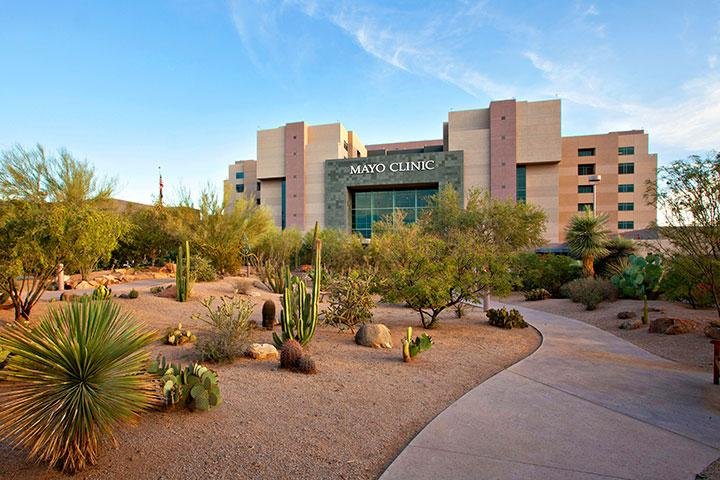
Founded: 1972
Acceptance Rate: ~4.5%
Tuition: ~$60,000/year (with many students receiving full scholarships)
The Mayo Clinic Alix School of Medicine is directly connected to the world-renowned Mayo Clinic, consistently ranked among the best hospitals in the world. This unique integration allows students to learn in an environment where patient care, research, and medical innovation are seamlessly connected. Mayo’s approach emphasizes quality over quantity, focusing on small class sizes to foster personalized mentorship and close faculty-student relationships.
Why Mayo Clinic Stands Out
- Small Class Sizes – Encourages individualized guidance, collaboration, and direct access to faculty mentors.
- Patient-Centered Care – From the very first day, students are immersed in clinical experiences that prioritize compassion and communication.
- Multiple National Campuses – In addition to the flagship Rochester campus, students can study at locations in Arizona and Florida, expanding clinical exposure and networking opportunities.
With its full-scholarship opportunities, world-class training, and unmatched commitment to patient care, the Mayo Clinic Alix School of Medicine is ideal for students who want to train in one of the most respected medical environments on the planet.
6. Columbia University Vagelos College of Physicians and Surgeons – New York, New York

Founded: 1767
Acceptance Rate: ~3%
Tuition: ~$68,000/year (with generous need-based scholarships available)
Columbia University’s Vagelos College of Physicians and Surgeons (VP&S) combines the prestige of the Ivy League with the energy and diversity of New York City. Located in Manhattan’s Washington Heights neighborhood, the school offers unparalleled urban clinical exposure and access to one of the most culturally diverse patient populations in the country.
Why Columbia Stands Out
- Debt-Free Commitment – The first medical school in the US to eliminate need-based student debt, ensuring financial barriers don’t limit career choices.
- Humanism in Medicine – A strong focus on the doctor–patient relationship, ethics, and compassionate care.
- Premier Clinical Partnerships – Affiliated with NewYork-Presbyterian Hospital, one of the nation’s top healthcare institutions, providing exceptional training opportunities.
With its blend of world-class academics, a commitment to affordable medical education, and access to cutting-edge clinical environments, Columbia offers students the tools to excel in any medical specialty — while serving communities with empathy and integrity.
7. Yale School of Medicine – New Haven, Connecticut
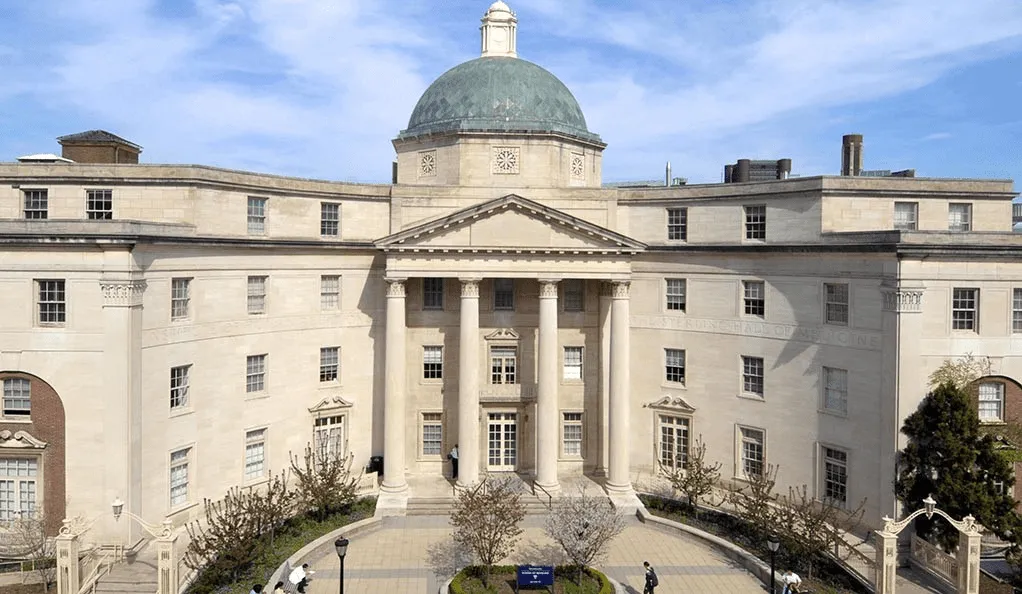
Founded: 1810
Acceptance Rate: ~5.7%
Tuition: ~$67,000/year
Yale School of Medicine is renowned for its innovative “Yale System” of medical education, which eliminates grades and class rankings during the first two years. This unique approach fosters a collaborative, low-pressure learning environment, allowing students to focus on mastering the material, exploring research opportunities, and pursuing individual academic interests without the stress of constant evaluation.
Why Yale Stands Out
- Flexible Curriculum – Encourages independent learning, self-directed study, and personalized academic paths.
- Excellence in Research & Public Health – Known for groundbreaking work in biomedical sciences, global health, and epidemiology.
- Prestigious Clinical Affiliation – Students gain hands-on experience at Yale-New Haven Hospital, one of the top teaching hospitals in the country.
For aspiring physicians who value academic freedom, strong mentorship, and a balance between research and patient care, Yale offers an environment that nurtures both intellectual curiosity and clinical excellence.
8. Washington University School of Medicine in St. Louis – St. Louis, Missouri
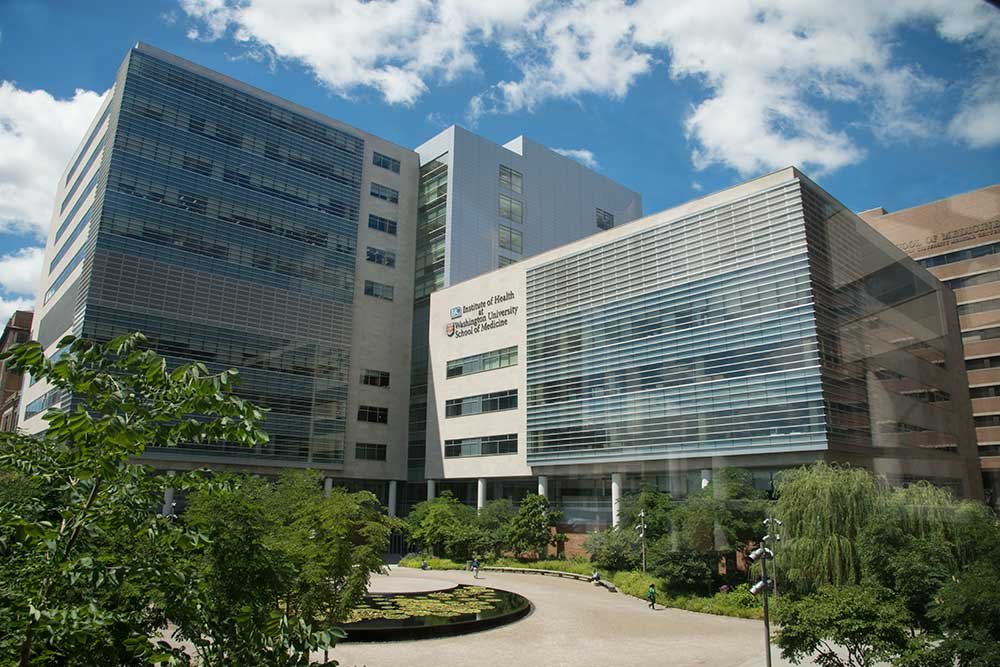
Founded: 1891
Acceptance Rate: ~8%
Tuition: ~$65,000/year
Washington University School of Medicine (WashU) has built a strong reputation for excellence in medical research, patient care, and residency placement. Known for producing graduates who excel in both academic and clinical settings, WashU consistently ranks among the nation’s top medical schools. Its location in St. Louis also offers the advantage of lower living costs compared to many other major medical hubs, making it an attractive choice for students balancing academic prestige with affordability.
Why Washington University Stands Out
- Top NIH Research Funding Recipient – Consistently ranks among the nation’s leaders in securing federal research grants.
- Specialized Medical Breakthroughs – Home to cutting-edge programs in cancer biology, neuroscience, and genetic medicine.
- Cost Advantage – Lower cost of living in St. Louis allows students to focus more on their training and research without excessive financial pressure.
With a strong combination of research excellence, clinical training, and financial practicality, Washington University offers an exceptional environment for aspiring physicians looking to make a lasting impact in medicine.
9. University of Pennsylvania Perelman School of Medicine – Philadelphia, Pennsylvania

Founded: 1765 (the oldest medical school in the United States)
Acceptance Rate: ~4%
Tuition: ~$68,000/year
The University of Pennsylvania’s Perelman School of Medicine — often called Penn Medicine — combines over 250 years of medical education excellence with a forward-looking approach to healthcare. As one of the most prestigious and competitive medical schools in the nation, Penn blends its historic legacy with cutting-edge research, modern clinical training, and groundbreaking medical innovations.
Why Penn Medicine Stands Out
- Excellence in Translational Research – Bridges the gap between laboratory discoveries and real-world patient treatments.
- Premier Clinical Partnership – Affiliated with the Hospital of the University of Pennsylvania, one of the top teaching hospitals in the country.
- Leadership in Immunotherapy & Gene Therapy – At the forefront of developing life-saving treatments for cancer, genetic disorders, and chronic diseases.
Penn Medicine offers students the rare combination of deep academic tradition and pioneering innovation, preparing graduates to become leaders in both patient care and biomedical discovery.
10. Duke University School of Medicine – Durham, North Carolina

Founded: 1930
Acceptance Rate: ~4%
Tuition: ~$66,000/year
Duke University School of Medicine is known for its innovative accelerated curriculum, which allows students to complete all basic science coursework in just one year. This unique structure frees up the remaining years for expanded clinical experience, advanced research, and elective studies, giving Duke students a competitive edge when applying for residencies or pursuing specialized fields.
Why Duke Stands Out
- Flexible Training Pathways – Students can tailor their education to match career goals, whether in research, surgery, or global health.
- Global Health Focus – Home to the Duke Global Health Institute, which offers opportunities to work on healthcare challenges around the world.
- Prestigious Clinical Affiliation – Close ties with Duke University Hospital, consistently ranked among the top hospitals in the United States.
With its forward-thinking curriculum, strong research infrastructure, and emphasis on global impact, Duke University School of Medicine offers an education that is both intellectually rigorous and globally relevant.
Admission Requirements for Top US Medical Schools
While each school has its own criteria, most competitive programs expect:
- Bachelor’s degree (science background strongly preferred)
- High GPA — 3.7+ for top-tier schools
- MCAT score in the top percentiles (510–528 range; 515+ for elite programs)
- Clinical experience & volunteering in healthcare settings
- Research experience (especially important for research-heavy schools)
- Strong letters of recommendation from professors or physicians
- Compelling personal statement showcasing passion, purpose, and commitment to medicine
Tips to Boost Your Chances of Admission
- Start Early – Plan your pre-med track from freshman year of college.
- Ace the MCAT – Aim for scores above 515 for top programs.
- Get Real Experience – Volunteer in clinics, hospitals, or research labs.
- Network Strategically – Attend medical school open houses and connect with alumni or current students.
- Show Leadership – Lead or start a healthcare-related project or initiative.
Key Factors to Consider When Choosing a Medical School
- Location & Cost of Living – Affects your budget and lifestyle.
- Specializations Offered – Match your career interests.
- Residency Match Rates – Higher rates often indicate stronger training and connections.
- Student Support Services – Mental health, academic advising, and mentoring.
- Research Funding – Especially important for academic or research careers.
- Global Health Opportunities – For those interested in international medical work.
Frequently Asked Questions (FAQs)
Q1: What’s the hardest medical school to get into?
Harvard, Stanford, and NYU Grossman School of Medicine are consistently among the most competitive, with extremely low acceptance rates.
Q2: Can I get into a top medical school without research experience?
Yes, but research experience significantly improves your chances—especially at research-focused institutions.
Q3: Which US medical school has the lowest tuition?
Public schools like the University of Texas Southwestern offer some of the lowest tuition rates for in-state students.
Q4: Is it worth going to an Ivy League medical school?
Ivy League schools offer prestige, strong networks, and vast resources, but several non-Ivy programs (like Mayo Clinic Alix School of Medicine or UCSF) are equally exceptional.
Final Thoughts
The best medical school for you isn’t necessarily the one ranked #1 — it’s the one that aligns with your career goals, learning style, and personal values.
Whether you aim to pioneer cancer research, serve rural communities, or become a world-class surgeon, the United States offers world-class medical programs to help you achieve your vision.
Take time to:
- Research thoroughly
- Visit campuses
- Talk to current students and faculty
- Understand each school’s culture
With dedication, preparation, and the right fit, you can begin a medical career that transforms lives.
Hi, I’m Haider Ali, author and co-founder of TigerJek.com and Wiki.TigerJek.com. I’ve been deep into Roblox and mobile games for years, and I personally test every strategy, build, and method I cover. I like taking complicated mechanics and turning them into clear, simple guidance that helps players improve faster and enjoy the game more.


